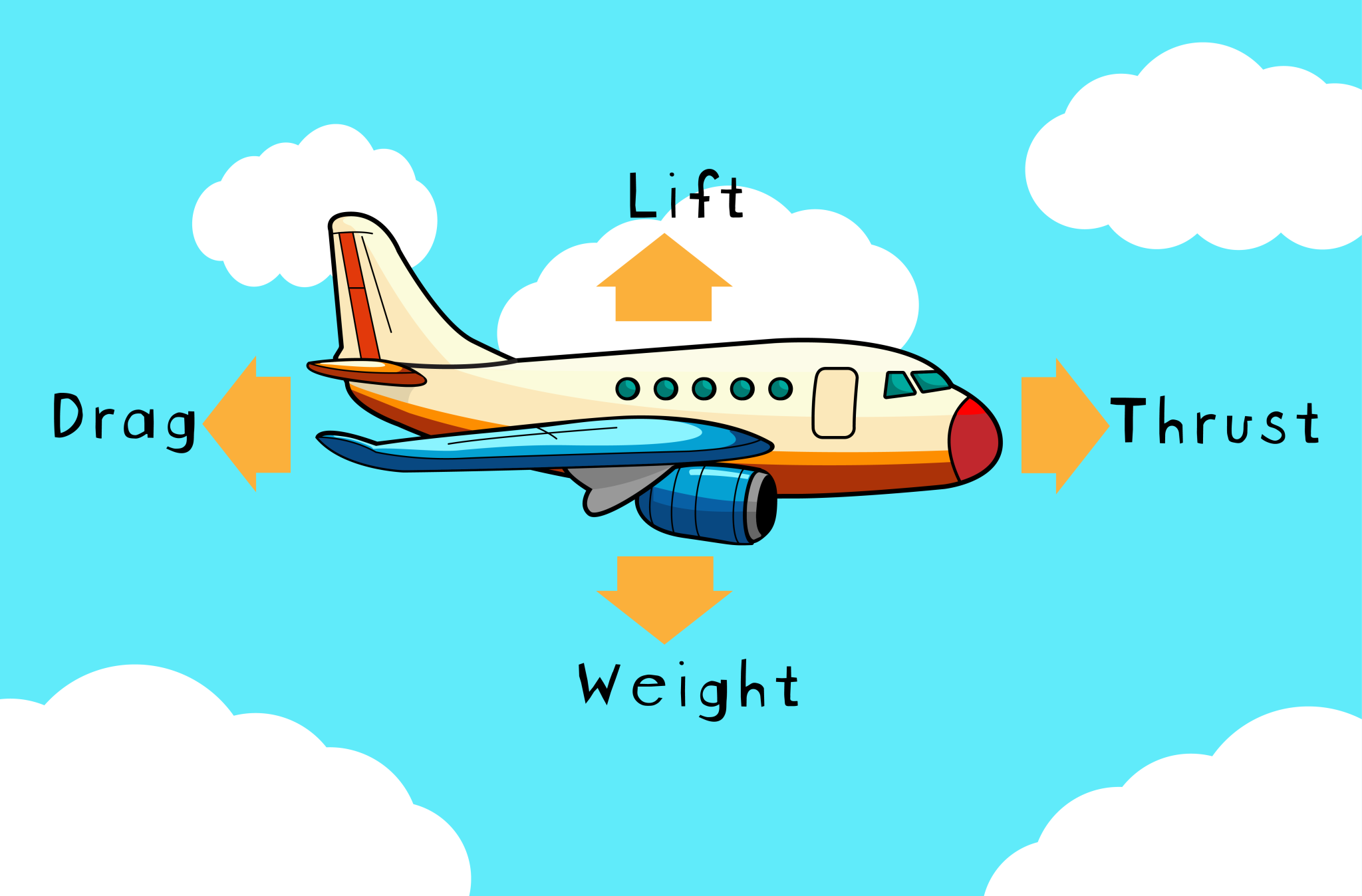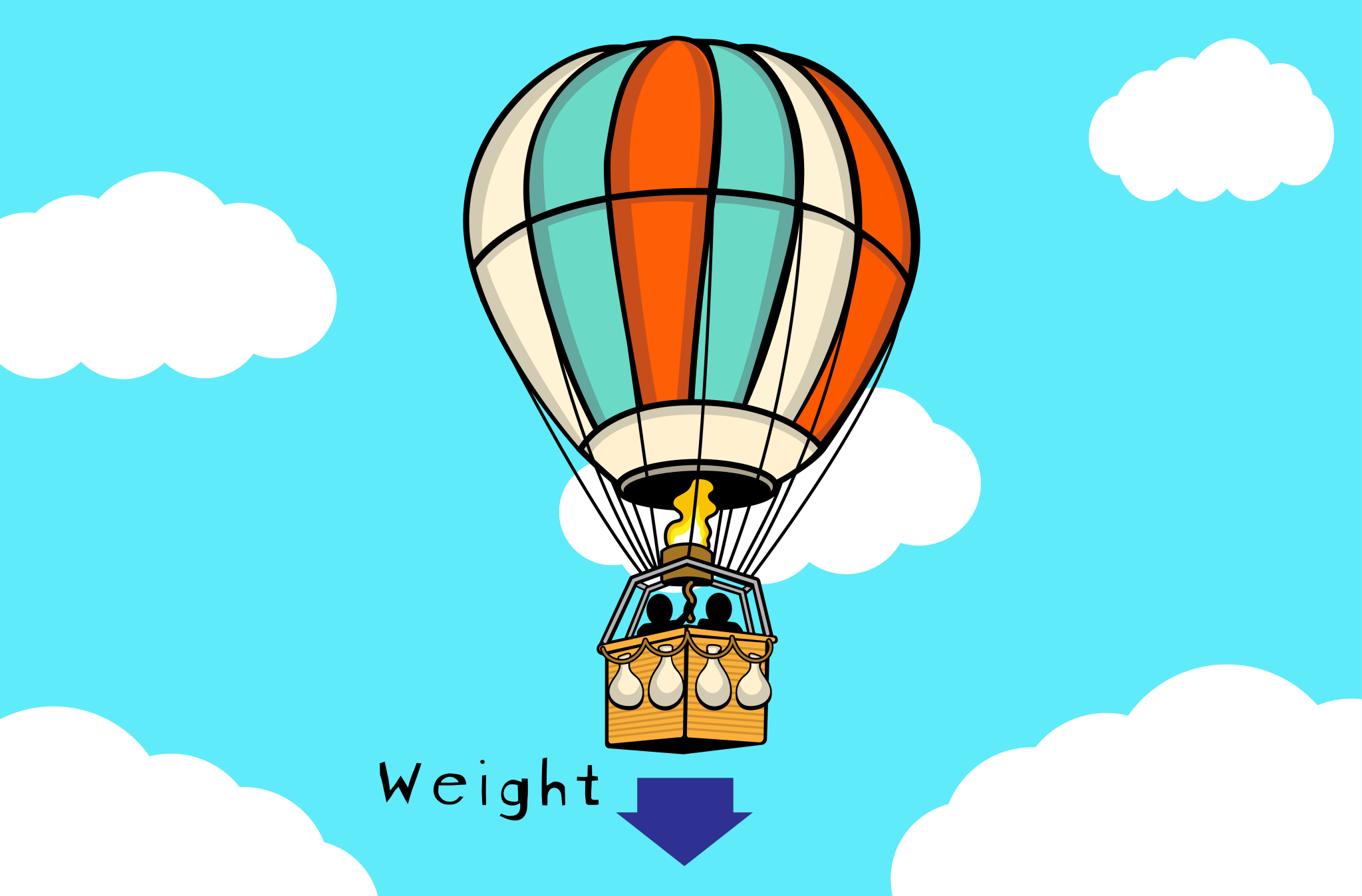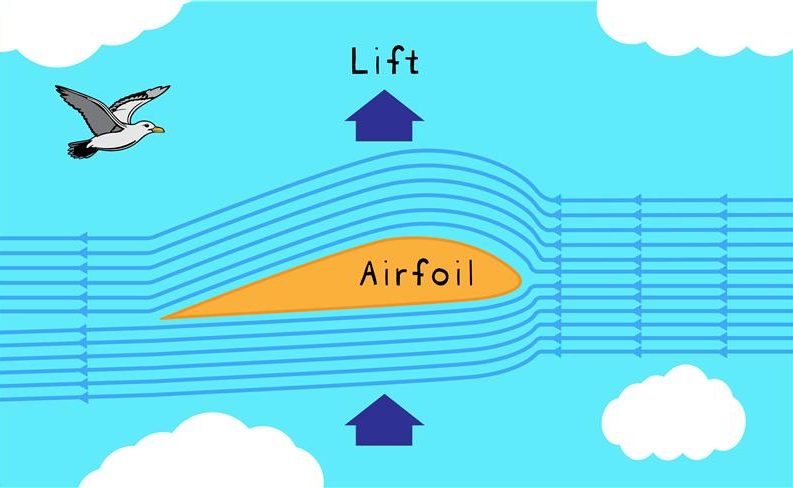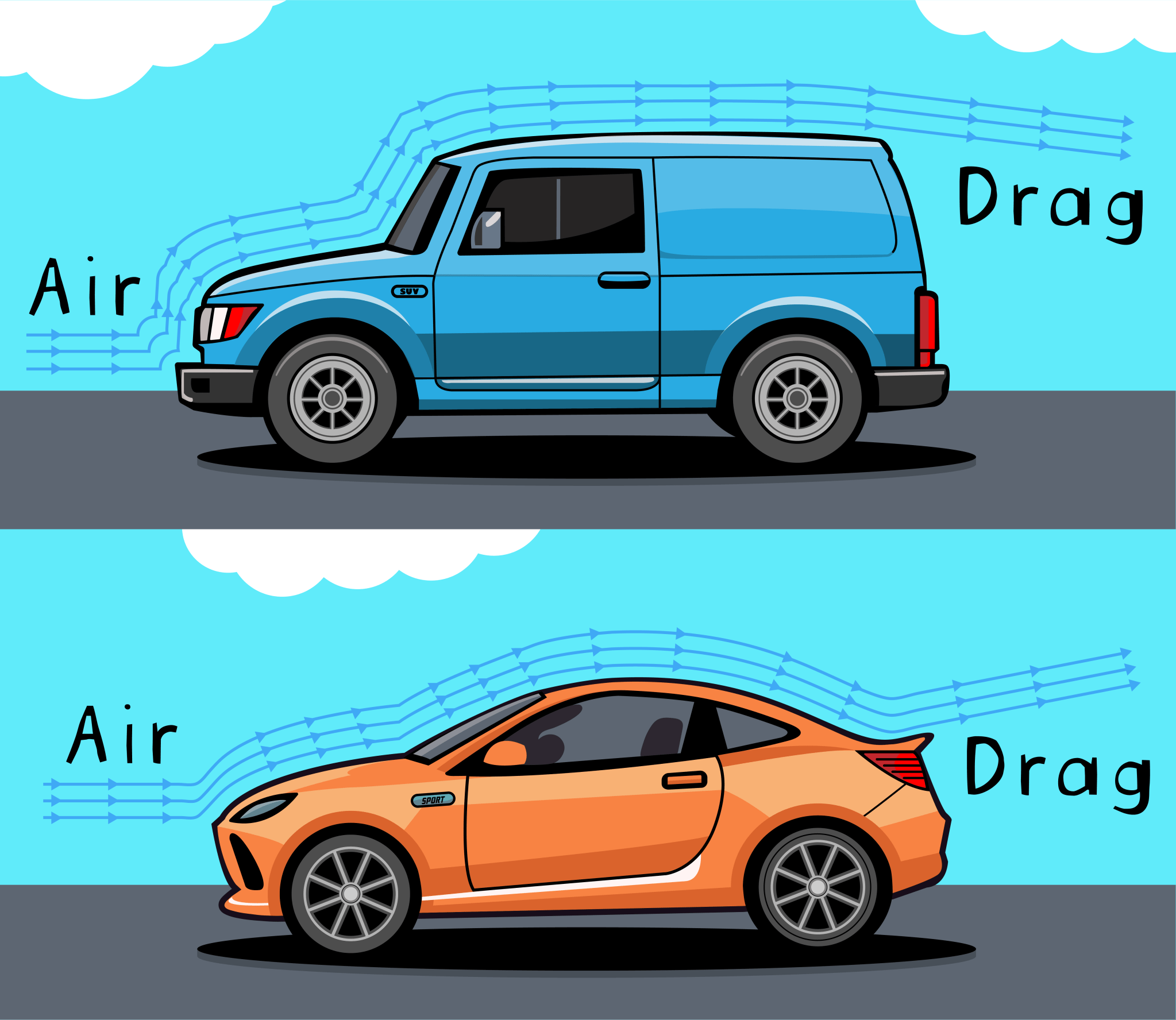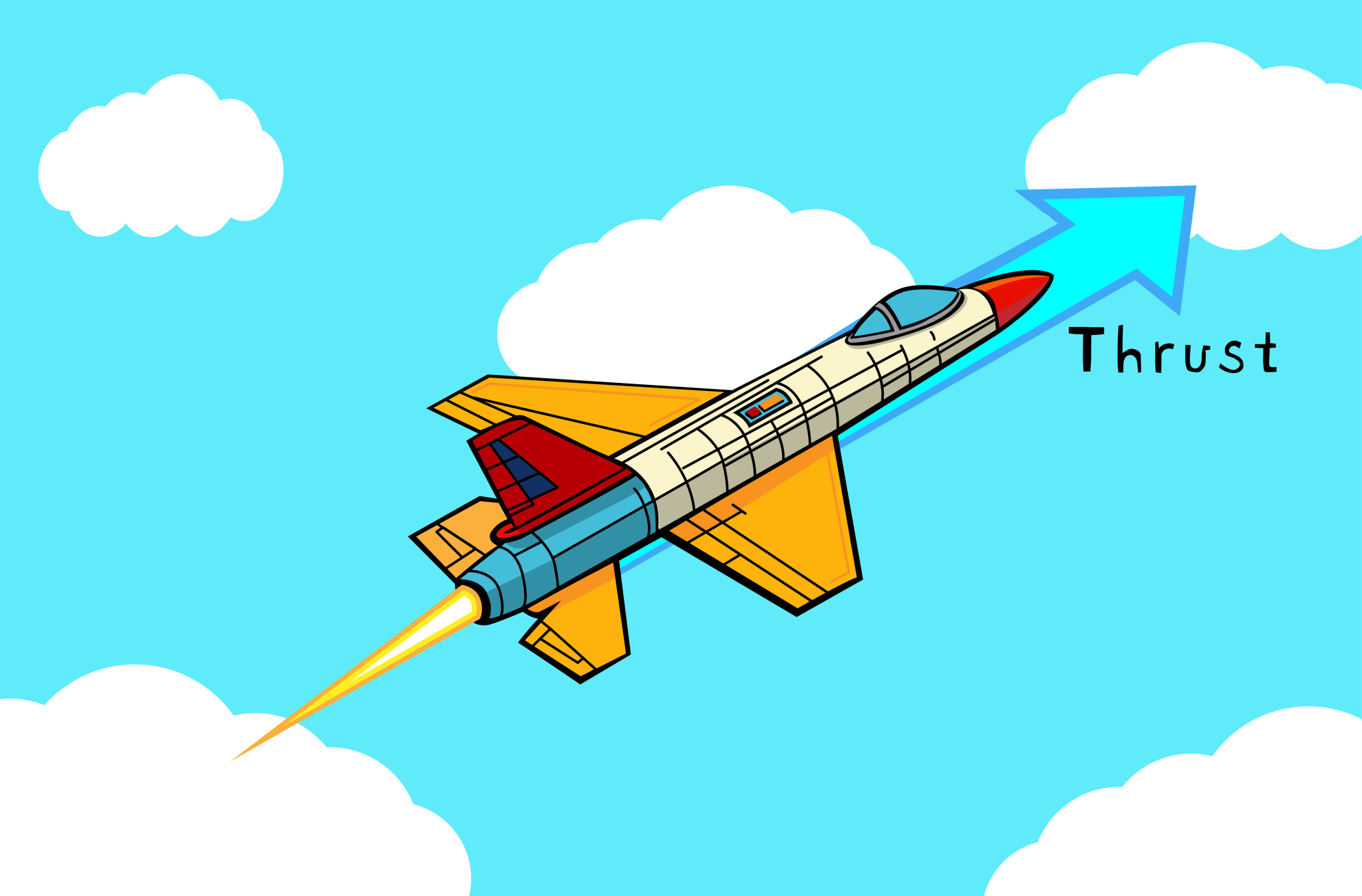What Is Aerodynamics? (Grades 5-8)
- Aerodynamics is the study of how objects move through air, affecting everything from airplanes to rockets to kites.
- The four forces of flight are lift, weight, thrust, and drag, which work together to determine an object’s movement up and down, faster or slower.
- Lift is the upward force that allows an object to fly, created by air flowing over a curved surface, such as an airplane wing or a kite’s sail.
- Drag is the backward force that opposes motion, caused by air resistance, which can be reduced by shaping an object to minimize its surface area and aerodynamic drag.
- Aerodynamics plays a crucial role in NASA’s work, including improving aircraft design, studying atmospheric conditions on other planets, and understanding how objects move through space.
This article is for students grades 5-8.
Aerodynamics is the way objects move through air. The rules of aerodynamics explain how an airplane is able to fly. Anything that moves through air is affected by aerodynamics, from a rocket blasting off, to a kite flying. Since they are surrounded by air, even cars are affected by aerodynamics.
What Are the Four Forces of Flight?
The four forces of flight are lift, weight, thrust and drag. These forces make an object move up and down, and faster or slower. The amount of each force compared to its opposing force determines how an object moves through the air.
What Is Weight?
Gravity is a force that pulls everything down to Earth. Weight is the amount of gravity multiplied by the mass of an object. Weight is also the downward force that an aircraft must overcome to fly. A kite has less mass and therefore less weight to overcome than a jumbo jet, but they both need the same thing in order to fly — lift.
What Is Lift?
Lift is the push that lets something move up. It is the force that is the opposite of weight. Everything that flies must have lift. For an aircraft to move upward, it must have more lift than weight. A hot air balloon has lift because the hot air inside is lighter than the air around it. Hot air rises and carries the balloon with it. A helicopter’s lift comes from the rotor blades. Their motion through the air moves the helicopter upward. Lift for an airplane comes from its wings.
How Do an Airplane’s Wings Provide Lift?
The shape of an airplane’s wings is what makes it possible for the airplane to fly. Airplanes’ wings are curved on top and flatter on the bottom. That shape makes air flow over the top faster than under the bottom. As a result, less air pressure is on top of the wing. This lower pressure makes the wing, and the airplane it’s attached to, move up. Using curves to affect air pressure is a trick used on many aircraft. Helicopter rotor blades use this curved shape. Lift for kites also comes from a curved shape. Even sailboats use this curved shape. A boat’s sail is like a wing. That’s what makes the sailboat move.
What Is Drag?
Drag is a force that pulls back on something trying to move. Drag provides resistance, making it hard to move. For example, it is more difficult to walk or run through water than through air. Water causes more drag than air. The shape of an object also affects the amount of drag. Round surfaces usually have less drag than flat ones. Narrow surfaces usually have less drag than wide ones. The more air that hits a surface, the more the drag the air produces.
What Is Thrust?
Thrust is the force that is the opposite of drag. It is the push that moves something forward. For an aircraft to keep moving forward, it must have more thrust than drag. A small airplane might get its thrust from a propeller. A larger airplane might get its thrust from jet engines. A glider does not have thrust. It can only fly until the drag causes it to slow down and land.
Why Does NASA Study Aerodynamics?
Aerodynamics is an important part of NASA’s work. The first A in NASA stands for aeronautics, which is the science of flight. NASA works to make airplanes and other aircraft better. Studying aerodynamics is an important part of that work. Aerodynamics is important to other NASA missions. Probes landing on Mars have to travel through the Red Planet’s thin atmosphere. Having to travel through an atmosphere means aerodynamics is important on other planets too.
More About Aerodynamics
Read What Is Aerodynamics (Grades K-4)

